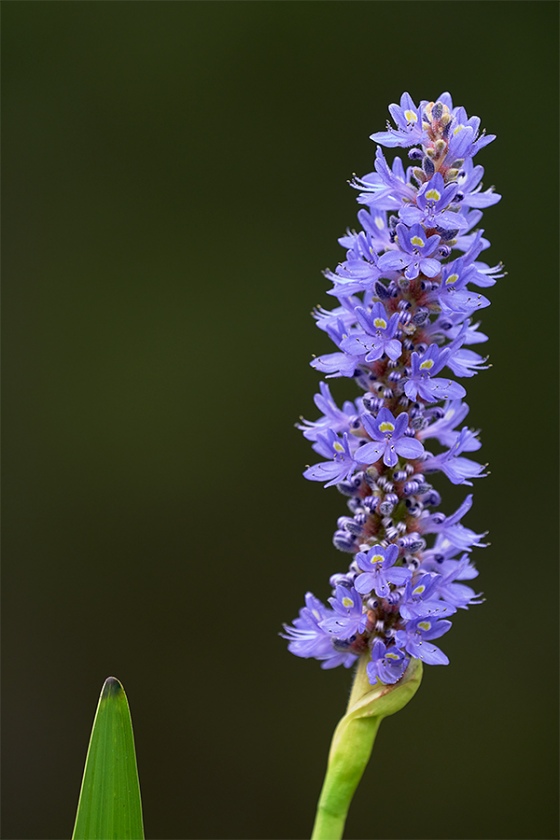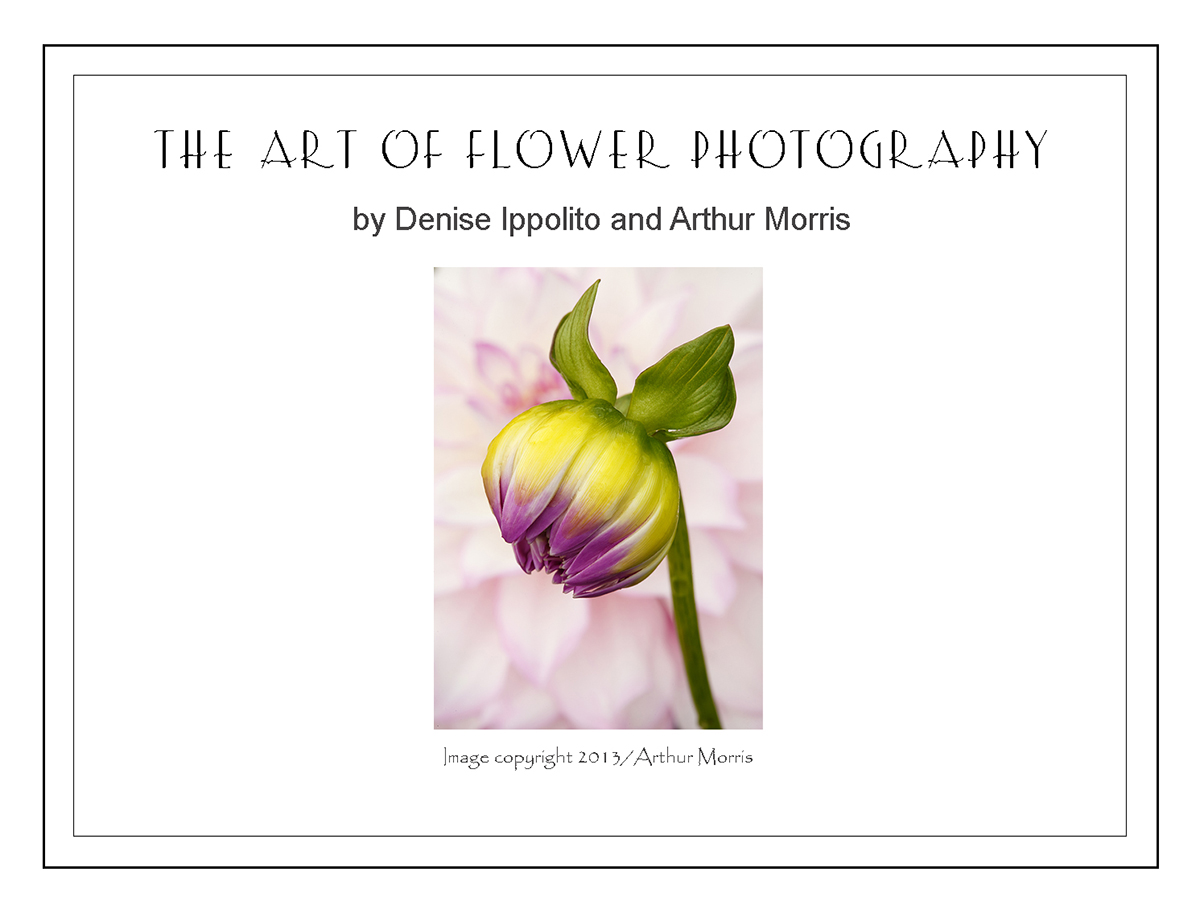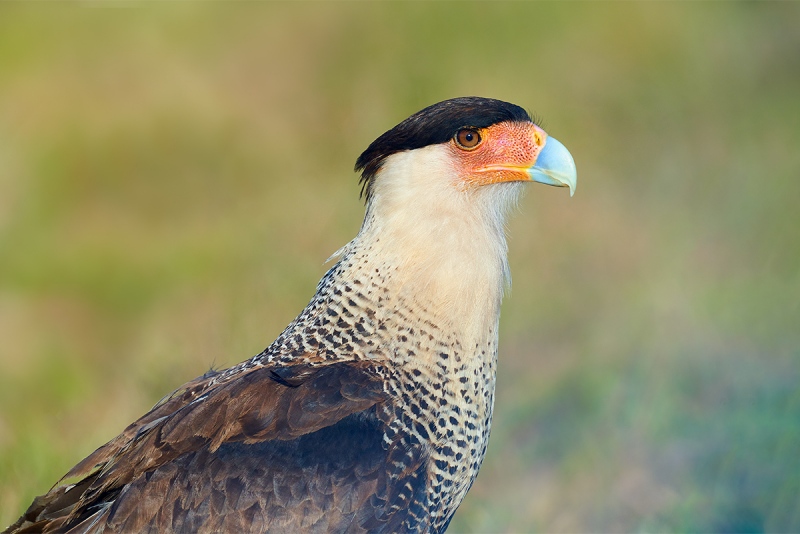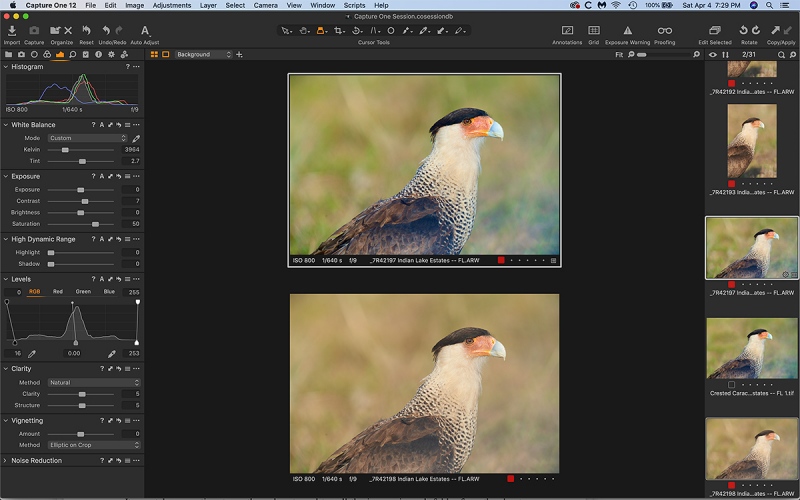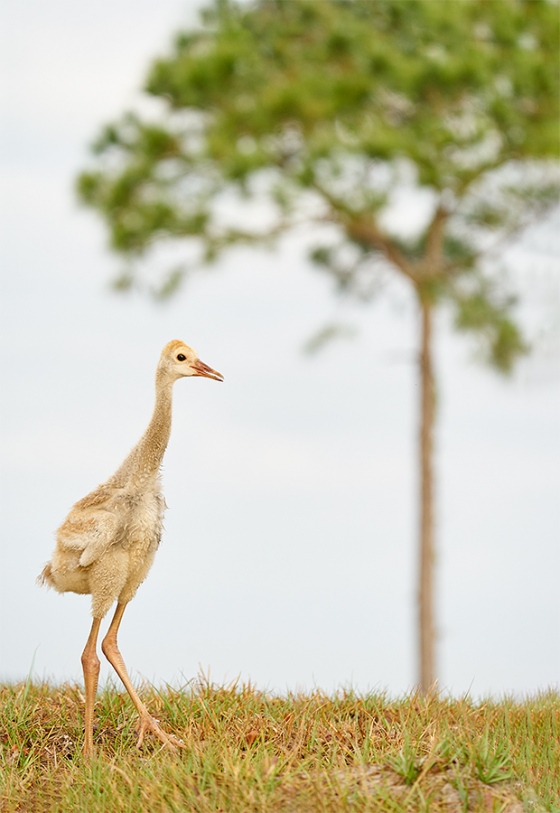April 6th, 2020 What’s Up?
It’s cloudy here again today, Monday 6 APR 2020. I took yesterday afternoon off from photography as it was drizzling. I spent about 2 1/2hours alternating between crying and sobbing watching Forrest Gump on TIVO. I had not watched it in at least a dozen years. I had totally forgotten what an amazing movie it is. For many years, I felt that The Shawshank Redemption — I have watched that one at least 25 times over the years — should have won Best Picture in the 1994 Academy Awards. After last night, I realize that I was wrong. Way wrong. The screenplay (by Eric Roth based on the novel by Winston Groom) was captivating and moving, the acting (Tom Hanks — winner: Best Actor, Robin Wright, Gary Sinise — nominated: Best Supporting Actor, Mykelti Williamson, & Sally Field) was too good, and the cinematography was outstanding as well. I could not believe how many great scenes I had forgotten and how many historically-important occurrences had been written into the story. Watching it again was time well-spent.
I will be heading down to the lake again this morning. I have upped my daily swim from 44 to 50 lengths (with 88 to a mile).
Coming tomorrow: two great Osprey landing sunset silhouettes.
COVID-19 Protocol Updates
Some might be interested in learning more from Dr. Dietrich Klinghardt about the virus and various and effective treatment protocols. You can view it here on the Sophia Education website.
|
|
|
This image was created yesterday at Indian Lake Estates, FL — 5 APR 2020. I used the handheld Sony FE 100-400mm f/4.5-5.6 GM OSS lens (at at 339mm) and the 61-mega-pixel monster, the Sony Alpha a7R IV Mirrorless Digital camera body. Exposure determined by Zebras with ISO on the rear dial. ISO 800: 1/100 sec. at f/6.3 in Manual mode. AWB at 9:09am on a cloudy-dark morning.
Tracking Flexible Spot M AF-C was active at the moment of exposure.
Pickerelweed blossom
|
The Leaf or Not the Leaf?
Would you have included the leaf in the image design? Should I have removed the leaf during the image optimization? Either way, be sure to let us know why. Comments on an alternate composition are welcome.
My Big Mistake
What was my biggest mistake in the creation of this image? (Hint: I was being lazy …)
SONY 100-400
As noted here many times previously, the .98 meter minimum focusing distance of the SONY 100-400 (the same as the Canon 100-400 II), is a huge plus. It comes in very handy when working with mega-tame birds and can be effective as a quasi-macro lens for large bugs (including butterflies and dragonflies), frogs, all but very small flower blossoms, and lots more. In addition, it is a more than capable flight lens that is a lot lighter than the 200-600. The 100-400 was my workhorse lens on the 2019 Galapagos Photo-Cruise of a Lifetime.
New Used Gear Listings
Please note: the purchase of any item below will include a $50.00 discount on the almost-finished SONY e-Guide.
Sony FE 100-400mm F4.5-5.6 GM OSS
IPT veteran and dear friend Patrick Sparkman is offering a Sony FE 100-400mm F4.5-5.6 GM OSS Lens in very good condition for a very low $1650.00. The body of the lens is in excellent condition. The glass is perfect except for a tiny scratch on the front element that does not affect performance. The sale includes the lens hood, the original box, the soft case that came with the lens, the front lens cap, the rear lens cap, and insured shipping via Fed Ex Ground. Your item will not ship until your check clears unless other arrangements are made.
Please contact Patrick via e-mail.
The .98 meter minimum focusing distance of the SONY 100-400 is a huge plus. It comes in very handy when working with mega-tame birds and the lens can be effective as a quasi-macro lens for large bugs (including butterflies and dragonflies), frogs, all but very small flower blossoms, and lots more. In addition, it is a more than capable flight lens that is a lot lighter than the 200-600. The 100-400 was my workhorse lens on the 2019 Galapagos Photo-Cruise of a Lifetime. As it sells new for $2,498.00 you can save a very neat $848.00 by grabbing Patrick’s lens.
Sony A7R III Digital Mirrorless Camera Body
IPT veteran and dear friend Patrick Sparkman is offering a Sony A7R III Mirrorless Camera Body in excellent plus condition for a very low $1690.00. The sale includes the original battery, the charger, the product box, the body cap, and insured shipping via Fed Ex Ground. Your item will not ship until your check clears unless other arrangements are made.
Please contact Patrick via e-mail.
The 7r iii performed superbly as my workhorse camera body on the 2019 Galapagos Photo-Cruise of a Lifetime. The image files are superb and it was not bad for flight photography. As this body sells new for $2,798.00 you can save a handsome $1108.00 by grabbing Patrick’s 7r iii.
Sony A9 Digital Mirrorless Camera Body
Sold first day of listing!
IPT veteran and dear friend Patrick Sparkman is offering a Sony A9 in excellent plus condition for $2390.00. The sale includes the original battery, the charger, the original product box, the body cap, and insured shipping via Fed Ex Ground. Your item will not ship until your check clears unless other arrangements are made.
Please contact Patrick via e-mail.
The a9, the original AF king, offers superb autofocus that absolutely kills for flight photography. Virtually every image is sharp on the eye. Many feel that the AF system on the a9 ii is no better. As the a9 sells new for $4498.00 you can save an incredible $2108.00! artie
Sony VG-C3EM Vertical Grip for α9, α7R III, & α7 III
Sold first day of listing!
IPT veteran and dear friend Patrick Sparkman is offering a used Sony VG-C3EM Vertical Grip for α9, α7R III, & α7 III in like-new condition for $220.00. The sale includes insured shipping via Fed Ex Ground. Your item will not ship until your check clears unless other arrangements are made.
Please contact Patrick via e-mail.
This accessory sells new for $348.00. artie
The Art of Flower Photography by Denise Ippolito and Arthur Morris
You can learn everything e about this e-book here, or order your copy here.
Video: The Art of Flower Photography
In this B&H Event Space video, two of the world’s premier photographers of flora and fauna — Arthur Morris and Denise Ippolito — share the techniques they use to create dramatic, sharp, well-composed, properly exposed images of flowers and flower fields. Denise does great things with the Canon 100mm f/2.8 L IS lens, while artie often goes to longer focal lengths—he has been seen photographing tulips at Keukenhoff Gardens, Holland, with a 600mm lens and a teleconverter. In addition to standard techniques, the video ends with Ippolito and Morris showing a wide range of abstract floral images and describing a variety of creative artistic effects such as multiple exposures, sharp/soft blending, texture overlays, warping a flower, creating zoom/twirls, in-camera blurs, and many others.
Click here to see the video.
April 5th, 2020 What’s Up
After being red-hot for days, photography at ILE has slowed down just a bit. I did get the cranes swimming on Saturday morning but that afternoon yielded only some Black Vulture images; several were on a lawn picking away at a fish that had been dropped by an Osprey that had been perched on a telephone pole. It is cloudy-dark here this morning, Sunday 5 APR 2020. I will head down to the lake at about 8:15am.
BIRDS AS ART
BIRDS AS ART is registered in the U.S. Patent and Trademark Office
Money Saving Reminder
If you need a hot photo item that is out of stock at B&H, would enjoy free overnight shipping, and would like a $50 discount on your first purchase over $1000.00, click here to order and enter the coupon code BIRDSASART at checkout. If you are looking to strike a deal on Canon or Nikon gear (including the big telephotos) or on a multiple item order, contact Steve Elkins via e-mail or on his cell at (479) 381-2592 (Eastern time) and be sure to mention your BIRDSASART coupon code and use it for your online order. Steve has been great at getting folks the hot items that are out of stock at B&H. Those include the SONY a7r IV, the SONY 200-600, the SONY 600mm f/4 GM, and the Nikon 500mm PF. Steve is eager to please.
Gear Questions and Advice
Too many folks attending BAA IPTs and dozens of photographers whom I see in the field and on BPN, are–out of ignorance–using the wrong gear especially when it comes to tripods and more especially, tripod heads… Please know that I am always glad to answer your gear questions via e-mail. Those questions might deal with systems, camera bodies, accessories, and/or lens choices and decisions.
|
|
|
This image was created on 2 APR at Indian Lake Estates. Working from my SUV, I used the Induro GIT 204/FlexShooter Mini-mounted Sony FE 600mm f/4 GM OSS lens, the Sony FE 2.0x Teleconverter, and the 61-MP Monster, the Sony Alpha a7R IV Mirrorless Digital camera body. ISO: 800. Exposure determined by Zebras with exposure compensation on the rear wheel; in the relatively soft light, I went with some Zebras on the whitest brighest parts of the bird’s neck. 1/1000 sec. at f/9 in Manual mode. AWB at 6:33pm on partly sunny afternoon.
Tracking Flexible Spot M AF-C on the bird’s face did the job perfectly. Click on the image to see a larger, sharper version.
Crested Caracara head and shoulders portrait
|
The Situation
As recently as Thursday past, I had been seeing two Crested Caracaras foraging for bugs in the grass on the North Field (and on the lawns of some adjacent homes). I created some decent images of the birds on the scraggly grass but was not thrilled with any of them. So when I saw this bird — the more handsome of the two — I maneuvered my Sequoia closer and closer to the bird who would simply walk a few steps to my right each time I approached. I started with verticals at 1200mm and my last efforts produced two horizontal images that turned out to be the winners.
|
|
|
Click on the image to enlarge and read the fine print.
Crested Caracara — pre- and post-Capture One RAW Conversion Adjustments
|
Pre- and Post-Capture One RAW Conversion Adjustments Screen Capture
The lower of the two images above, _7R42198, is the first of the two horizontal captures. Properly exposed to the right in the soft light, this image looks flat and washed out. The image on the top is _7R42198. With Capture One, the adjustments to the RAW are saved with the file after they are made. The sliders on the left of the image show the adjustments that I made. You can see them easily by clicking on the image to enlarge it. Study those changes to learn why the image on the top looks so much better than the image on the bottom.
Once I had the TIF in Photoshop, I did some bill clean-up using all of my usual cadre of tools: the Patch Tool, the Spot Healing Brush, the Clone Stamp Tool and several small, warped, transformed Quick Masks fine-tuned with a Regular Layer Mask. In addition, take a close look at the distracting out-of-focus grass stems in the background; compare the background in the top image in the Capture One Screen Capture with the optimized image that opens this blog post and see how much better the background looks in the optimized version.
Background Smoothing
Many folks attempt to do background smoothing by first selecting the subject. That pretty much never works well. I developed a technique where I first use either an 80% Clone Stamp or Content-Aware Fill to do the grunt work and then apply a Gaussian Blur that is refined by a Hide-All (Inverse) Layer Mask. The latter is described in detail on pages 41-43 of the a href=”http://birdsasart-shop.com/digital-basics-ii/” target=”_blank” rel=”noopener noreferrer”>BIRDS AS ART Current Workflow e-Guide (Digital Basics II), an instructional PDF that is sent via e-mail.
SONY 1200mm Sharpness
It is an absolute pleasure to be able to work with the SONY 600 GM and the 2X TC with either the a9 ii or the 7r iv and consistently produce sharp images of both static birds. I always try to go with higher shutter speeds with the 7r iv than I do with the a9 ii. In addition, though the a9 ii is clearly best for flight photography, the a7r iv can perform well for flight in certain (bright or very bright) situations with the 600 GM and the 1.4X TC (and even with the 2X on rare occasion).
|
|
The BIRDS AS ART Current Workflow e-Guide (Digital Basics II).
You can order your copy from the BAA Online Store here, by sending a Paypal for $40 here, or by calling Jim or Jennifer weekdays at 863-692-0906 with your credit card in hand.
|
The BIRDS AS ART Current Workflow e-Guide (Digital Basics II)
All the techniques mentioned above and tons more (with the exception of Capture One RAW Conversions) — along with all of my personalized Keyboard Shortcuts — are covered in detail in the BIRDS AS ART Current Workflow e-Guide (Digital Basics II), an instructional PDF that is sent via e-mail. Learn more and check out the free excerpt in the blog post here. While the new e-Guide reflects my Macbook Pro/Photo Mechanic/DPP 4/Photoshop workflow, folks using a PC and/or BreezeBrowser will also benefit greatly by studying the material on DB II. Note: folks working on a PC and/or those who do not want to miss anything Photoshop may wish to purchase the original Digital Basics along with DB II while saving $15 by clicking here to buy the DB Bundle.
Folks who learn well by following along rather than by reading can check out the complete collection of MP 4 Photoshop Tutorial Videos by clicking here. Note: all of the videos are now priced at an amazingly low $5.00 each.
You can learn how and why I converted all of my Canon digital RAW files in DPP 4 in the DPP 4 RAW Conversion Guide here. More recently, I became proficient at converting my Nikon RAW (NEF) files in Adobe Camera Raw. About two years ago I began converting my Nikon and Sony RAW files in Capture One Pro 12 and continue to do so today.
To purchase Capture One, please use this link. Then you can learn more about Capture One in the Capture One Pro 12 Simplified MP4 Video here. The next step would be to get a copy of Arash Hazeghi’s “The Nikon Photographers’ Guide to Phase One Capture One Pro e-Guide” in the blog post here.
You can learn advanced Quick Masking and advanced Layer Masking techniques in APTATS I & II. You can save $15 by purchasing the pair. Folks can learn sophisticated sharpening and (NeatImage) Noise Reduction techniques in The Professional Post Processing Guide by Arash Hazeghi and edited by yours truly. Please use this link to purchase NeatImage.
To introduce folks to our MP.4 videos and the basics involved in applying more NeatImage noise reduction to the background and less on the subject, I’d be glad to send you a free copy of the Free Noise Reduction Basics MP.4 Video. Simply click to shoot me an e-mail to get your free copy.
If In Doubt …
If you are in doubt about using the BAA B&H affiliate link correctly, you can always start your search by clicking here. Please note that the tracking is invisible. Web orders only. Please, however, remember to shoot me your receipt via e-mail.






Please Remember to use my Affiliate Links and to Visit the BAA Online Store 🙂
To show your appreciation for my continuing efforts here, we ask, as always, that you get in the habit of using my B&H affiliate links on the right side of the blog or Bedfords, for all of your photo and electronics purchases. Please check the availability of all photographic accessories in the New BIRDS AS ART Online Store, especially the Mongoose M3.6 tripod head, Wimberley lens plates, Delkin flash cards and accessories, and LensCoat stuff.
As always, we sell only what I have used, have tested, and can depend on. We will not sell you junk. We know what you need to make creating great images easy and fun. And please remember that I am always glad to answer your gear questions via e-mail.
I would, of course, appreciate your using our B&H affiliate links or Bedfords for all of your major gear, video, and electronic purchases. For the photographic stuff mentioned in the paragraph above, and for everything else in the new store, we, meaning BAA, would of course greatly appreciate your business. Here is a huge thank you to the many who have been using our links on a regular basis and those who regularly visit the New BIRDS AS ART Online Store as well.
Facebook
Be sure to like and follow BAA on Facebook by clicking on the logo link upper right.
Typos
In all blog posts and Bulletins, feel free to e-mail or to leave a comment regarding any typos or errors. Just be right :).
April 4th, 2020 What’s Up?
Friday morning was not too good for photography. I had hoped to photograph the crane colt family crossing the canal. But instead of the cranes appearing, a car with two fishermen appeared and parked right at the point, right where I had seen them cross twice. So I messed around with some vultures, found the surviving tiny crane chick (that continued to be mega-shy), and searched in vain for the caracaras. Then I drove back to the South Peninsula to check on the crane colt family. The two adults were there with Orangey Colt. Gray Colt was not with them. I hoped that it was out in the marsh by itself but feared the worst …
I headed down on Friday afternoon to check on the crane family but did not find them on either side of the canal. With the east wind, prospects were not good but when I made a u-turn I came upon a tame Limpkin. I stayed with the bird for thirty minutes of blue-water background head-shots and eventually got a few images of the bird calling — there call is like a screaming person being tortured. With prospects dim, I almost headed home. But the sky looked promising for a sunset, so I drove around a bit. Again, the caracaras had disappeared. I went back to the South Peninsula to check on the missing colt. As I approached their favorite area, I saw the two adults walking toward me with one colt. Bummer. But then the second colt appeared from behind one of the adults. I was glad for the birds. And for me.
While an east wind on a sunny afternoon is terrible for traditional front-lit bird photography, it is great for flight silhouettes. I drove the two minutes to the new, low Osprey neat and enjoyed two red-sky landing sequences. So what began as a somewhat dismal day turned out to be a great day with a spectacular finish …
|
|
|
This image was also created on 29 MAR 2020. For this one I used the handheld Sony FE 200-600mm f/5.6-6.3 G OSS lens (at 220mm) and the blazingly fast AF King, the Sony Alpha a9 II Mirrorless Digital camera body. ISO 1000. Exposure determined by Zebras with ISO on the rear wheel: 1/500 sec. at f/6.3 in Manual mode; I went for lots of Zebras on the white sky. AWB at 8:18am on a suddenly cloudy morning.
Tracking Flexible Spot M AF-C was active at the moment of exposure and performed superbly.
Image #2: Sandhill Crane colt and pine tree bird-scape
|
My Favorite Crane Colt Image and Why …
In the Switching Back to Nikon! Clean, Tight, and Graphic. And Thinking Wide for a Bird-scape … blog post here, I shared two images of the same Sandhill Crane colt and asked which was the best image.
Many folks commented on the April Fool’s aspect of the post, but very few commented on the two images. Those who did all liked the wide version above better than the head portrait. As much as I like tight head-shots, I absolutely fell in love with the wide shot above. I only created two frames after raising the 2-6 and zooming out. When I saw the images on the laptop I was thrilled. Thanks to Tracking Flexible Spot M both were sharp on the colt. And after setting up to get some Zebras on the light sky on a cloudy morning, the exposure was perfect as well.
Why do I like it so much? The composition is perfect. The colt’s raised foot adds. And the mood of the image is somewhat cartoon-like and light-hearted, almost whimsical. Most importantly, it shows that varying your game (clean, tight, and graphic) and thinking creatively (in this case, wider), can result in something new and different.
I did, however, struggle with leveling this image correctly. I eventually decided that the tree had to be growing straight up and down … That despite the fact that the ground (rather than the tree) wound up looking tilted … What are your thoughts on that? I will try to remember to check out the tree this morning, Saturday 4 APR 2020. I am heading down to the lake very soon on yet another clear, cool morning.
|
|

